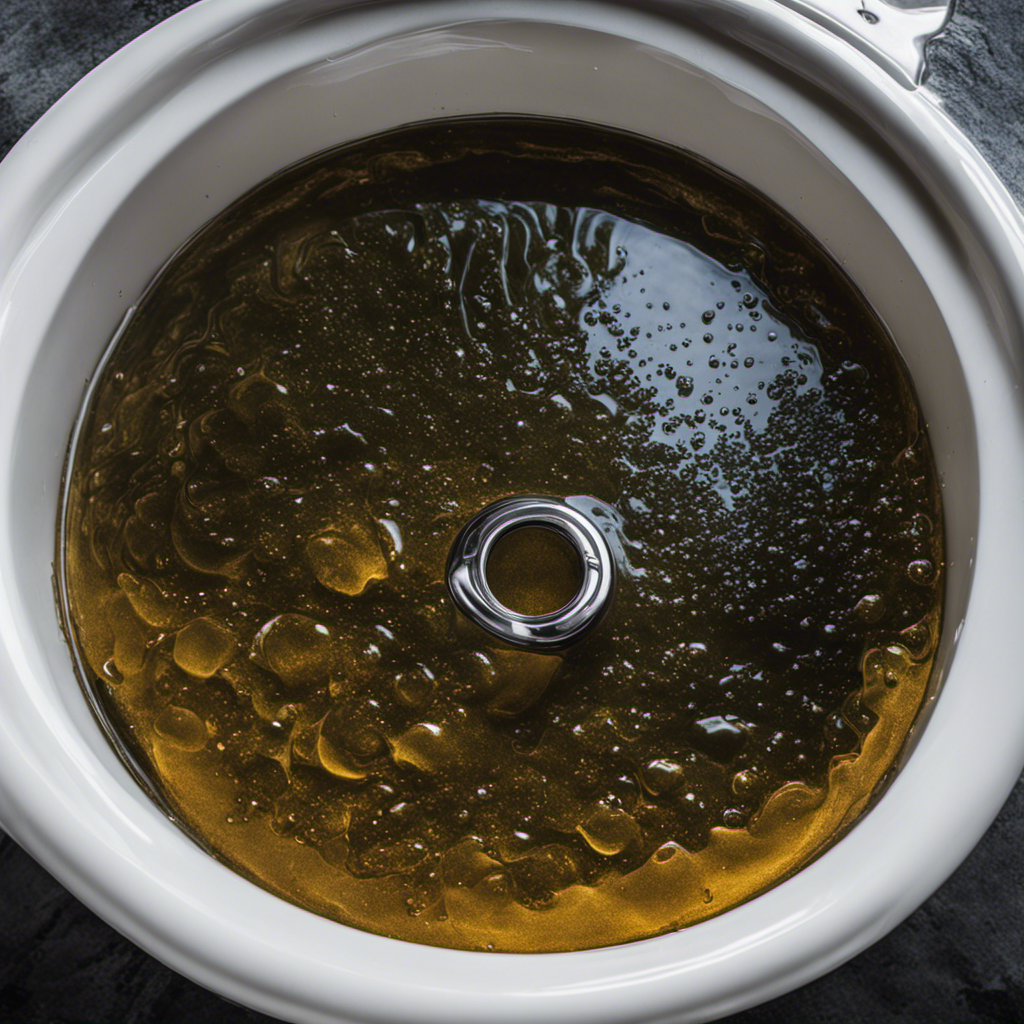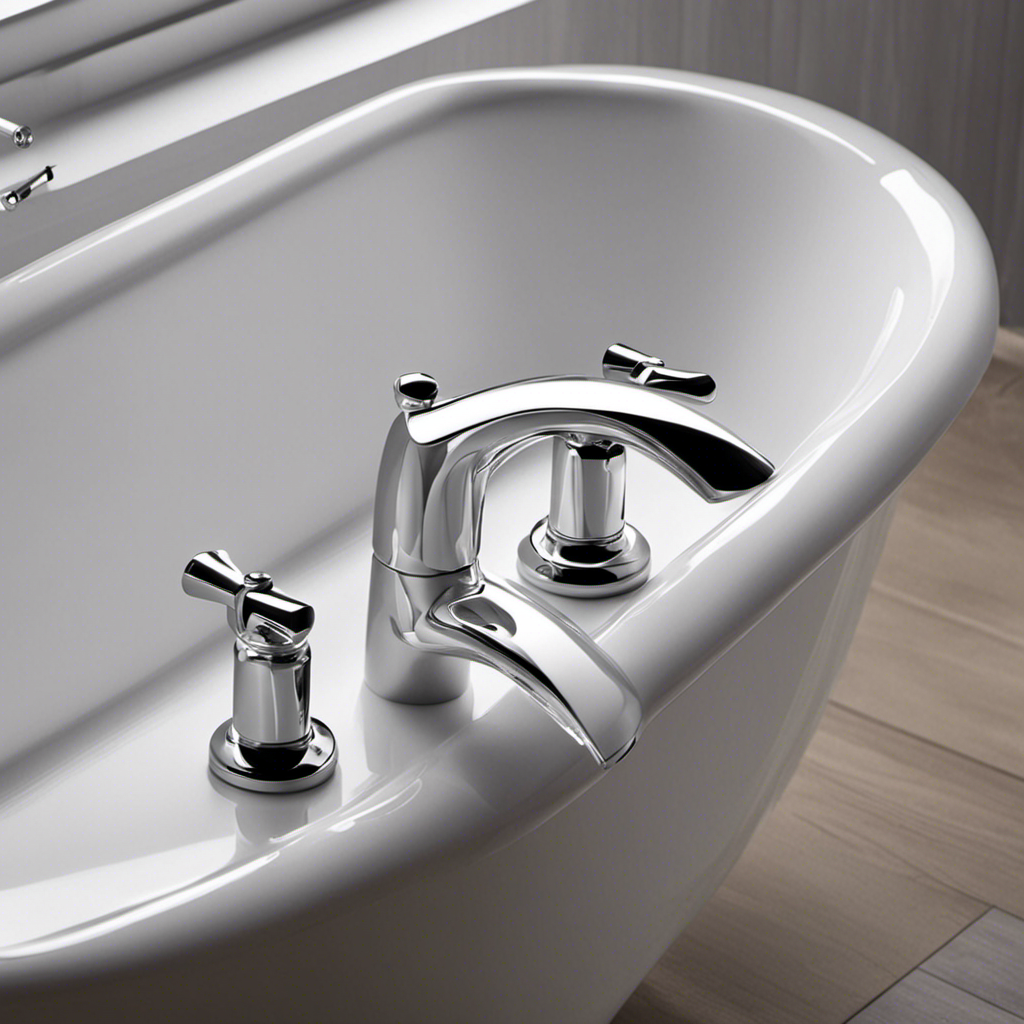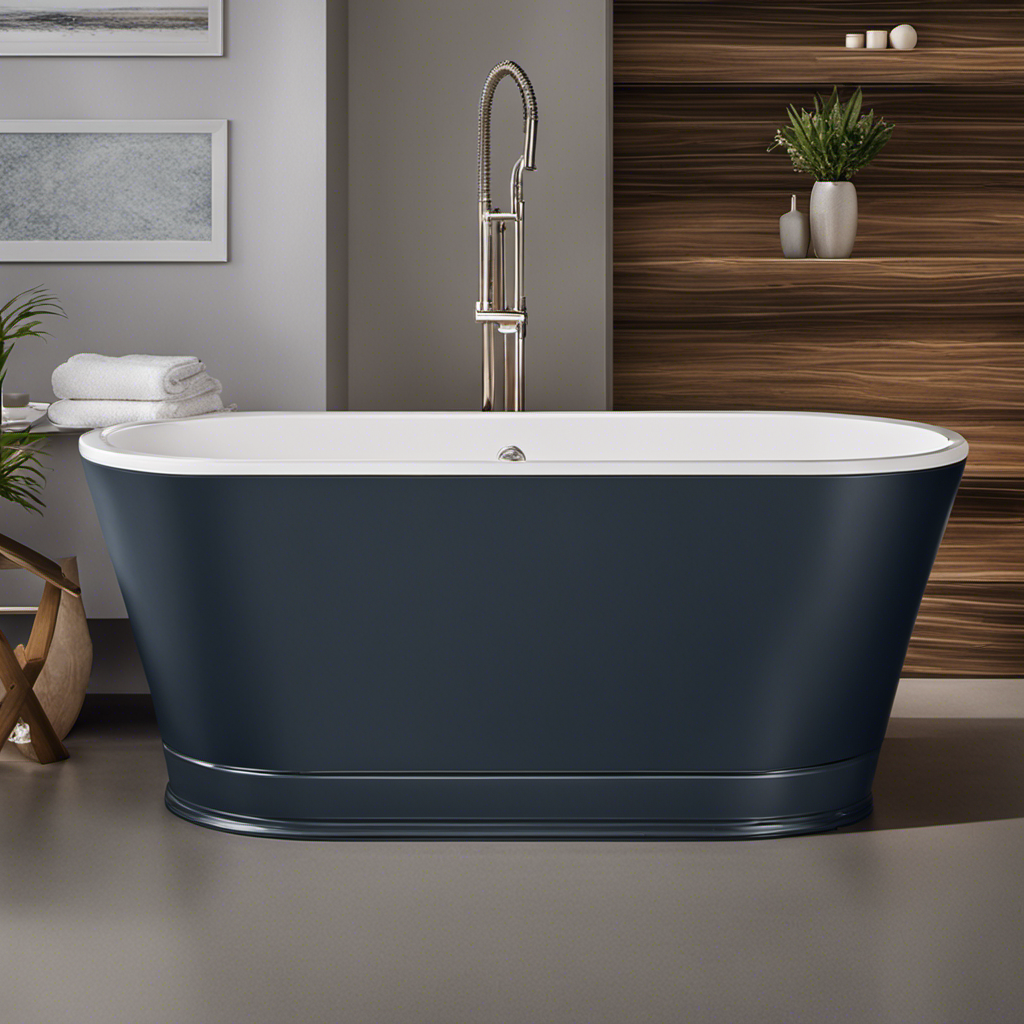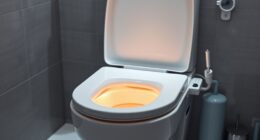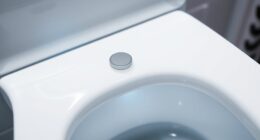Are you frustrated with your bathtub drain refusing to cooperate? It’s time to uncover the mysteries behind this common household dilemma.
In this article, we will explore the common causes of bathtub drain clogs, signs to look out for, and DIY methods to unclog your drain.
Prepare to arm yourself with knowledge as we delve into the depths of your drain’s stubbornness. Say goodbye to standing water and hello to a smoothly flowing bathtub experience.
Let’s get started!
Key Takeaways
- Common causes of bathtub drain clogs include hair and soap residue buildup, lack of regular drain maintenance, failure to use a drain stopper or hair catcher, and accumulation of visible hair or debris.
- DIY methods to unclog a bathtub drain include using chemical drain cleaners, a plunger or snake, and natural home remedies like baking soda and vinegar. It is important to consider the pros and cons of each method and seek professional help for persistent clogs.
- Chemical drain cleaners are fast-acting and effective against tough clogs, but they can be potentially harmful and have environmental impacts if not disposed of properly.
- Plungers and snakes are easily accessible tools that can effectively dislodge and remove different types of clogs, but they require proper technique and may not be suitable for severe clogs.
Common Causes of Bathtub Drain Clogs
One of the most common causes of bathtub drain clogs is a buildup of hair and soap residue. Over time, these substances can accumulate in the drain pipe, restricting the flow of water.
To prevent such clogs, regular bathtub drain maintenance is essential. You can start by using a drain stopper or a hair catcher to trap hair and prevent it from going down the drain. Additionally, it is recommended to clean the drain regularly by removing any visible hair or debris.
If you encounter a clogged drain, there are common household items that can help unclog it. For example, you can try using a mixture of baking soda and vinegar or a plunger to dislodge the obstruction and restore proper drainage.
Signs That Your Bathtub Drain Is Clogged
Are you experiencing slow draining or standing water in your tub? This could be a sign that your bathtub drain is clogged and in need of maintenance. It’s important to address this issue promptly to avoid further complications.
One common sign of a slow draining bathtub is water pooling around your feet while you shower or bathe. Additionally, you may notice a gurgling sound coming from the drain or a foul smell emanating from the drain. These signs indicate that there is a blockage preventing water from flowing freely down the drain.
To prevent future clogs, it is recommended to regularly clean your bathtub drain by removing any hair or debris that may accumulate over time. Additionally, using a drain strainer can help prevent larger objects from entering the drain and causing clogs.
DIY Methods to Unclog a Bathtub Drain
When it comes to unclogging a bathtub drain, there are several DIY methods you can try.
Three key points to consider are the use of chemical drain cleaners, using a plunger or snake, and natural home remedies.
Each method has its pros and cons, so it’s important to understand the potential risks and effectiveness of each before deciding which one to use.
Chemical Drain Cleaners
You should try using chemical drain cleaners to unclog your bathtub. These cleaners are specifically designed to dissolve the gunk and debris that clog your drain, making it easier for the water to flow freely again. Here are some reasons why chemical drain cleaners can be an effective solution:
- Fast-acting: Chemical drain cleaners work quickly, often unclogging your drain within minutes.
- Convenient: These cleaners are readily available in most stores and require minimal effort to use.
- Effective against tough clogs: Chemical drain cleaners can tackle even the most stubborn clogs, including hair, soap scum, and grease.
However, it’s important to consider the potential dangers associated with chemical drain cleaners:
- Harmful chemicals: Chemical drain cleaners contain corrosive substances that can cause burns, skin irritation, and respiratory problems if mishandled.
- Environmental impact: These cleaners can harm the environment if not disposed of properly.
While chemical drain cleaners can be effective, it’s essential to use them with caution and consider natural alternatives when possible to minimize potential risks.
Plunger or Snake
To unclog the drain, try using either a plunger or a snake. These two tools are effective in removing blockages from your bathtub drain. A plunger creates suction, which can dislodge the clog, while a snake, also known as a drain auger, can break up and remove the obstruction. Both options are readily available at hardware stores and can be used for regular bathtub drain maintenance. However, if you have tried these methods and the clog persists, it may be time to consider professional drain cleaning. A professional drain cleaner has specialized equipment and expertise to tackle stubborn clogs that cannot be easily resolved with household tools. They can thoroughly clean your drain and ensure its proper functioning.
| Plunger | Snake |
|---|---|
| Creates suction | Breaks up and removes clogs |
| Easily accessible | Easily accessible |
| Effective for minor clogs | Effective for more stubborn clogs |
| Requires manual effort | Requires manual effort |
| Affordable | Affordable |
| May not work for all clogs | May not work for all clogs |
| Requires proper technique | Requires proper technique |
Natural Home Remedies?
If you’re looking for a natural remedy, consider using baking soda and vinegar to unclog your bathtub drain. Homemade drain cleaners can be effective in clearing bathroom clogs without the use of harsh chemicals.
Here’s how you can use baking soda and vinegar to tackle your clogged drain:
- Pour half a cup of baking soda down the drain.
- Follow it with half a cup of vinegar.
- Let it sit for about 30 minutes.
- Rinse the drain with hot water.
Using this combination creates a chemical reaction that can break down the clog and clear the drain. It’s a safe and eco-friendly option for unclogging your bathtub drain.
However, keep in mind that this method may not work for all types of clogs, especially if the blockage is severe. If the clog persists, you may need to try alternative methods like using a plunger to clear your bathtub drain.
Using a Plunger to Clear a Bathtub Drain
Grab the plunger and position it over the drain, making sure it forms a tight seal.
Using a plunger is an effective and simple method for clearing a clogged bathtub drain.
Before you start plunging, fill the tub with enough water to cover the rubber cup of the plunger. This will help create the necessary pressure to dislodge the clog.
With a firm grip on the handle, push the plunger down forcefully and then pull it up quickly. Repeat this motion several times until the water starts draining freely.
If a plunger is not available, there are alternative plumbing tools you can use, such as a drain snake or a drain claw. These tools can be effective in removing stubborn clogs and can be easily found at your local hardware store.
Regular bathtub drain maintenance is also important to prevent clogs from occurring in the first place.
How to Use a Drain Snake to Clear a Bathtub Drain
When it comes to clearing a bathtub drain, using a drain snake can be an effective technique.
The snake is a flexible tool that can reach deep into the drain to remove clogs and blockages.
It is especially useful for dealing with common bathtub drain issues such as hair buildup and soap scum.
Snake Technique Effectiveness
To unclog your bathtub drain, you can try using a snake to see if it effectively clears the blockage. The snake technique is a popular choice for tackling stubborn clogs, but it’s important to consider alternatives and weigh the pros and cons before proceeding.
Here are some things to keep in mind:
-
Pros of using a snake:
-
Effective at clearing most types of clogs.
-
Can reach deep into the drain pipe to remove blockages.
-
Cons of using a snake:
-
Requires some skill and practice to use properly.
-
May not be suitable for all types of clogs, such as ones caused by hard objects or tree roots.
While the snake technique can be a reliable option, it’s worth exploring other methods like using a plunger or chemical drain cleaners. Remember to always prioritize safety and consult a professional if the clog persists or worsens.
Common Bathtub Drain Issues
One common issue with bathtub drains is hair accumulation, which can lead to clogs over time if not addressed regularly. When you shower or bathe, loose strands of hair can easily go down the drain and get caught in the pipes. Over time, this hair can accumulate, forming a blockage that restricts water flow and causes slow draining.
To prevent bathtub drain clogs, there are a few simple steps you can take. First, invest in a drain strainer or hair catcher to catch any loose hair before it goes down the drain. Additionally, regular maintenance is key. Use a drain cleaner or vinegar and baking soda solution to flush out any build-up and keep your drains clear.
Chemical Drain Cleaners: Pros and Cons
Using chemical drain cleaners can be effective but may also have negative consequences. While they can quickly dissolve clogs and restore proper drainage, these cleaners contain harsh chemicals that can damage your pipes and harm the environment.
Here are the pros and cons of using chemical drain cleaners:
Pros:
- Fast and effective at removing clogs
- Readily available at most stores
Cons:
- Can cause pipe corrosion and damage
- Harmful to the environment and water supply
Considering the potential drawbacks of chemical drain cleaners, you may want to explore alternative methods for clearing your drains. Here are some alternatives to chemical drain cleaners:
-
Mechanical methods:
- Use a plunger or drain snake to physically dislodge the clog.
- Regularly clean and maintain your drains to prevent clogs from forming.
-
Natural remedies:
- Pour boiling water down the drain to break down grease and minor clogs.
- Create a mixture of baking soda, vinegar, and hot water to dissolve organic matter.
Preventing Bathtub Drain Clogs
Now that you’re aware of the pros and cons of chemical drain cleaners, let’s focus on preventing bathtub drain clogs and maintaining cleanliness.
Hair clogs are one of the most common culprits of drain blockages. To prevent this, consider using a drain strainer or hair catcher that fits over your bathtub drain. These simple devices trap hair and prevent it from going down the drain, reducing the risk of clogs.
Additionally, it’s important to regularly clean your bathtub drain to maintain its cleanliness and prevent buildup. You can do this by removing the drain stopper and using a brush or a drain snake to remove any accumulated debris.
When to Call a Professional for Bathtub Drain Issues
If you’re experiencing persistent clogs or unusual drain issues in your bathtub, it may be time to call a professional for assistance. While there are natural remedies you can try for minor drain problems, certain signs indicate a more serious issue that requires professional help.
Here are some signs to watch out for:
- Water draining slowly: If your bathtub takes an unusually long time to drain, it could be a sign of a clog deep within the pipes that natural remedies may not be able to fix.
- Foul odors: A persistent foul smell coming from your bathtub drain could indicate a build-up of debris or even a sewer line issue that should be addressed by a professional plumber.
When it comes to serious bathtub drain issues, it’s best to rely on the expertise of a professional. They have the tools and knowledge to accurately diagnose and resolve the problem, ensuring your bathtub drain functions properly once again.
Alternative Methods to Unclog a Bathtub Drain
There are alternative methods available to unclog a bathtub drain without the need for professional assistance.
If you’re looking for natural alternatives, try using a mixture of baking soda and vinegar. First, pour half a cup of baking soda down the drain, followed by half a cup of vinegar. Let it sit for about 30 minutes, then flush it with hot water.
Another option is using a drain snake or a plunger. A drain snake can help break up the clog by physically removing it, while a plunger creates pressure to push the blockage through the pipes.
These methods can be effective in clearing minor clogs. However, if you have tried these techniques and the problem persists, it may be time to consider professional drain cleaning services.
Frequently Asked Questions
How Do I Remove a Bathtub Drain Stopper?
To remove a bathtub drain stopper, grab the stopper and twist it counterclockwise to unscrew it. If it’s stuck, use pliers to grip and turn. Common causes of clogs are hair and soap buildup.
Can I Use a Wire Hanger to Unclog My Bathtub Drain?
To unclog your bathtub drain, there are alternatives to using a wire hanger. Consider calling professional drain cleaning services, as they have the proper tools and expertise to effectively clear the blockage.
What Should I Do if My Bathtub Drain Is Still Clogged After Using a Plunger?
If your bathtub drain is still clogged after using a plunger, try alternative methods like using a drain snake or baking soda and vinegar. If those don’t work, it’s time to call a professional.
Are There Any Natural Remedies I Can Use to Unclog My Bathtub Drain?
To unclog your bathtub drain using natural remedies, you can try using a combination of baking soda and vinegar. The pros of this method include being environmentally friendly, but it may not be as effective for severe clogs.
What Are the Potential Risks of Using Chemical Drain Cleaners to Unclog My Bathtub Drain?
Chemical drain cleaners present potential dangers when used to unclog your bathtub drain. Instead, consider alternative solutions such as using a plunger, removing the drain cover to manually remove debris, or using a natural mixture of baking soda and vinegar.
Conclusion
So there you have it, now you know why your bathtub won’t drain! By following the DIY methods mentioned in this article, such as using a plunger or a drain snake, you can effectively clear your bathtub drain clogs.
Remember to take precautions while using chemical drain cleaners and always consider preventing future clogs by using drain screens and avoiding the accumulation of hair and soap residue.
Did you know that according to a survey, 80% of bathtub drain clogs are caused by hair buildup? Taking steps to prevent this can save you from the hassle of dealing with a clogged drain in the future.
